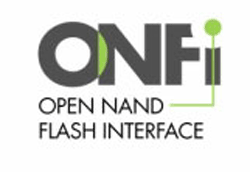The Open NAND Flash Interface (ONFI) Working Group released version 3.0 of its standard last week, driving up data transfer speeds to some 400MB per second and fueling solid state drive (SSD) growth.

The ONFI 3.0 standard, which seeks to define a common NAND Flash device interface and make it easy for electronics design and development engineers to include NAND in their projects, uses a non-volatile DDR2 interface to boost the aforementioned data rates and includes a means to potentially offload NAND lithography specific functionality to a stacked and co-packaged controller.
Makes working with NAND easier
According to the working group, “improvements in ONFI 3.0’s NAND interface speeds will also enable future NAND controllers to achieve similar performance with half the number of channels, providing both a cost and space savings, which are key requirements for solid-state drive (SSD) design.”
Another new features which also seems to be aimed at helping boost SSD's ease of use and, thereby, popularity is “a sophisticated die selection” capability that “reduces the number of chip enable (CE) pins, which in turn lowers the number of controller pins making PCB routing more efficient. Reducing the number of CE pins is especially important for SSDs, providing a significant cost reduction and allowing the extra pins to be assigned to other applications within the system,” the ONFI Working Group said in an official release.
This is potentially very good news for the working group's membership, which includes Micron, Intel, SanDisk, Seagate, and many others. It also means that SSD design changes could lower prices, boost performance, and help the devices better compete against incumbent technologies like hard-disk drives.
“Micron is focused on providing customers with a broad range of flash-based storage options that deliver a clear performance value-add, whether it’s at the NAND component level or within our portfolio of system-level solutions,” said Kevin Kilbuck, director of marketing for Micron’s NAND Solutions Group. “We look forward to extending our NAND and SSD portfolio to take advantage of the fast performance improvements and CE pin reduction that ONFI 3.0 provides.”
From an EE's perspective, the ONFI 3.0 standard — once in wider use — may mean that it is feasible to consider SSDs for use in devices that — for cost or other reasons — would have been impractical before. Some specific applications could include tablets, ultra-portable Internet enabled devices, next generation media devices, and in automobiles.
Eraser considerations
It is also important to note that a recent study has raised concerns about the SSD's eraseability http://tiny.cc/u1pwe. This study has caused some concern for information technologists, privacy advocates, and data security firms, since it seems that actually removing data from an SSD is far more difficult otherwise understand.
Armando Roggio
Advertisement
Learn more about Electronic Products Magazine





